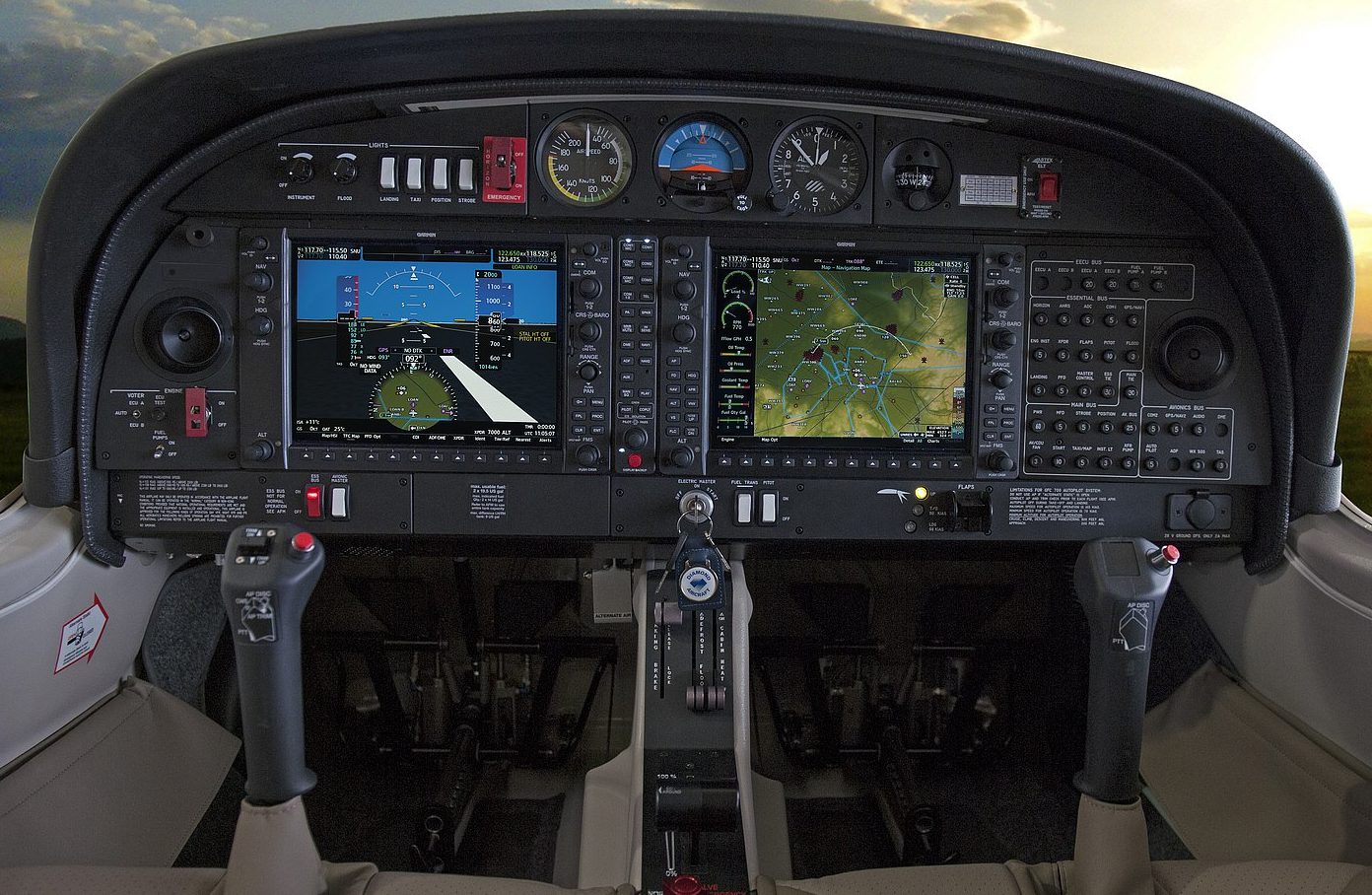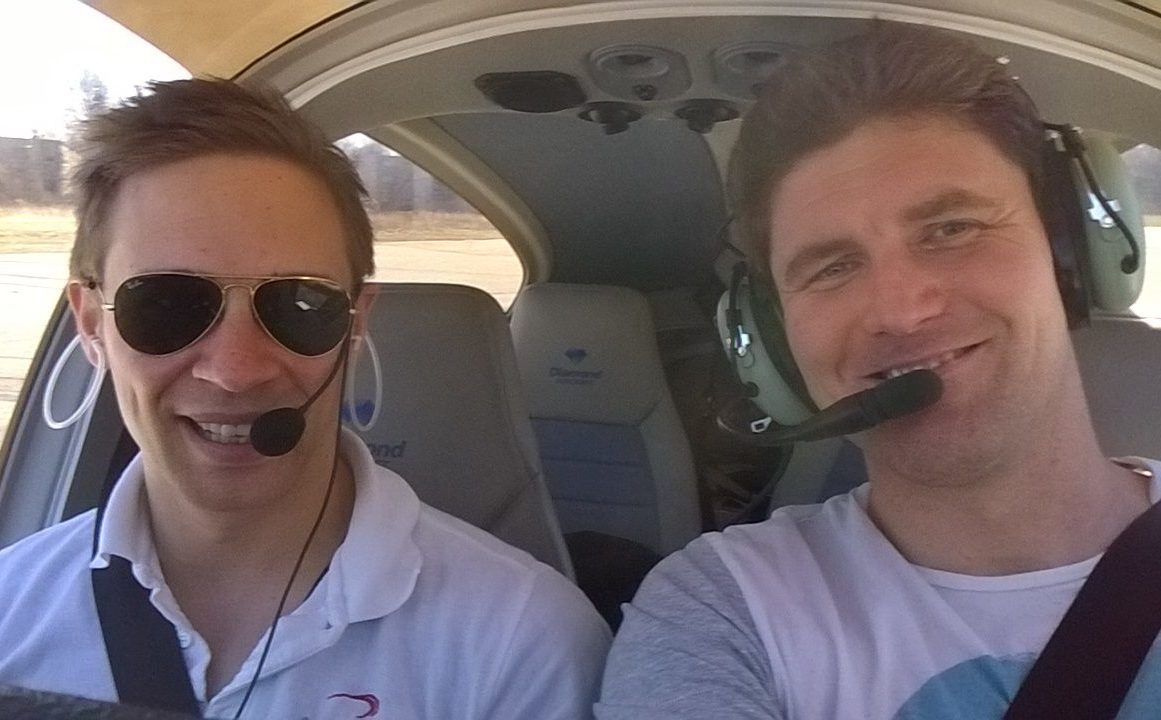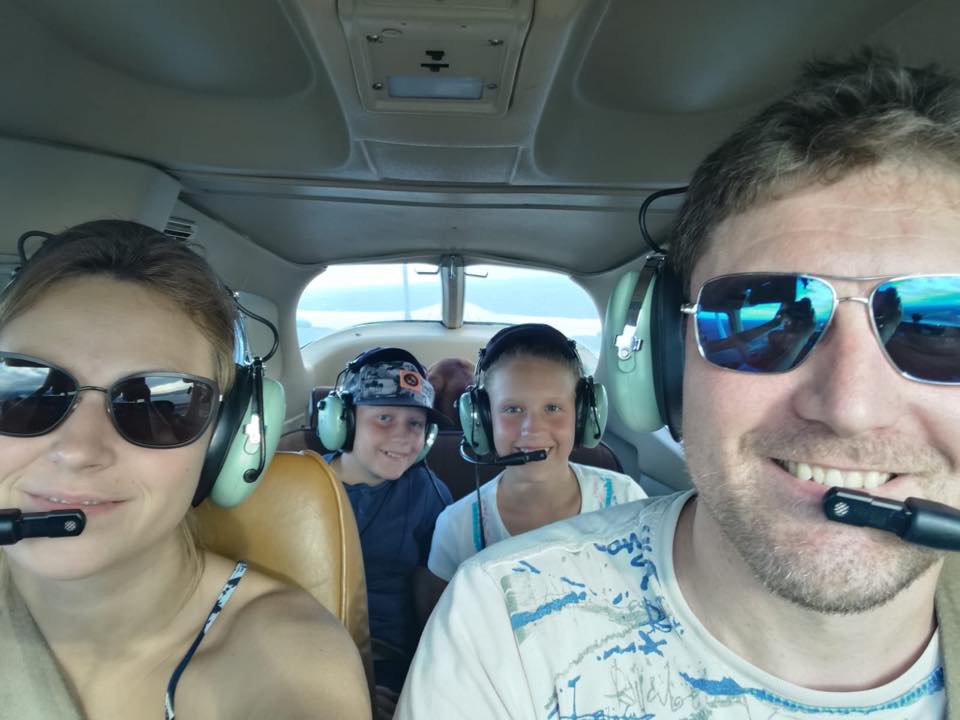A Simmering Passion
I grew up in a military town called Richmond on the outskirts of Sydney Australia, close to an Air Force base. Hearing the frequent and powerful roar of C130 Hercules aircraft pass our house on training flights planted the seeds for a lifelong curiosity and passion for flight.
Like it is for many want-to-be pilots, life and other priorities got in the way. Flight simulator felt like a good compromise scheduled between walks with the pram and nappy changes. As the kids got older things got easier, I started my own company and started to enjoy a little financial freedom.
The Match that lit the fire
 On a trip out to Australia with the kids Christmas 2014 we were on a road trip along the east coast. We stumbled across Merimbula airport and decided to go for a scenic flight.
On a trip out to Australia with the kids Christmas 2014 we were on a road trip along the east coast. We stumbled across Merimbula airport and decided to go for a scenic flight.
Our pilot gave me the controls soon after take-off. Having flown a lot of flight simulator it was easier than I expected. The view was spectacular. As we flew over the beautiful coastal beaches I realized I was hooked!
There was no going back now. We headed back to Finland where I was determined to find a school to teach me how to fly. I knew it could be difficult as I needed to find a school that would do the training in English.
Finding a Flight School in Finland
When I got back to Finland I started looking at different schools in the Helsinki region. Malmi airport was the obvious choice as there were a lot more options.
My short list of schools came down to TTT Aviation, BF-Lento, Patria and Aeropole. The cheapest option was TTT aviation but they were basically a 1 man show and there had been some safety issues in the past. BF-Lento was the second cheapest and had a good reputation but they had only old Cessna aircraft and most of their courses were in Finnish. Patria, the largest company (publicly listed Finnish Defence contractor) had a solid reputation and could deliver training in English, but they were the most expensive and their focus was on training Commercial pilots all the way through.
 I went with Aeropole as they had a very good reputation, could deliver all the training in English in a flexible way and had only modern state-of-the-art Diamond aircraft.
I went with Aeropole as they had a very good reputation, could deliver all the training in English in a flexible way and had only modern state-of-the-art Diamond aircraft.
They did me a deal to do my training on the 4 seater Diamond DA40 NG, a fully glass cockpit IFR certified Garmin G1000 aircraft.
The plane could fly fast and efficiently on a sophisticated turbocharged diesel engine.
My Flight Instructor
On day 1 I was assigned my instructor Oskari. He would be my instructor for the duration of my training. Oskari was a Finnish lad, but had done his training in the USA so English was very easy for him. At the time I met him he had accumulated close to 1500 hours and was ready to be recruited into an airline.
 One of the things I appreciated about Oskari was his exactness. He did everything by the book which is a very good way to be when training future pilots.
One of the things I appreciated about Oskari was his exactness. He did everything by the book which is a very good way to be when training future pilots.
This high standard also carried over to the other instructors at the school. I was fortunate enough to also receive training from other Instructors at the school as part of their quality assurance program.
One particular instructor I especially enjoyed flying with was Kari who was a retired military Jet Fighter and Rescue helicopter pilot.
Completing the Training
It took me 8 months and 12 days to get my PPL Pilot’s license. Flights were done during the week. Evenings and weekends were spent studying theory. I solo flew after 27 fights, 25 hours 24 min and 92 landings. I got my license after 57 flight, 56 hours 16 min and 182 landings, including the checkride. The license cost me around €24,000 including a Night rating.
The flying part was pretty straight forward but it took a fair amount of effort to reactivate my brain to study mode to memorize a lot of relevant and some not so relevant theory.
The mistake I made which most pilots also do is to start out with the fun flying and end up taking a break in the middle to focus on the theory. Flying is not like riding a bicycle, when you start flying again after passing the theory exams it takes effort to get back to where you were.
I found Meteorology to be the most interesting theory subjects followed closely by Principles of Flight. The most dull was probably Air Law. The most difficult part of flying was navigation and landing. Navigation wasn’t so hard on its own, it was just hard to do on top of everything else. It got easy to be safe with the landings but difficult to take it to the next level which was also about being smooth.
Life after getting the license
 Being able to fly with family and friends was very nice but very expensive with school aircraft so I started looking for cheaper alternatives. Joining flying clubs was an obvious way to get access to cheaper aircraft and meet new people who enjoyed the same hobby.
Being able to fly with family and friends was very nice but very expensive with school aircraft so I started looking for cheaper alternatives. Joining flying clubs was an obvious way to get access to cheaper aircraft and meet new people who enjoyed the same hobby.
I joined both the Malmi MIK flying club and Hyvinkää based Jukolanpilotit. I found out quickly that even though it was a bit more effort to drive to Hyvinkää, it was a lot easier to find available aircraft and get help and support from club instructors. The Hyvinkää aircraft were also considerably cheaper to rent.
I considered buying my own plane for a while but realized it didn’t make a lot of sense given the effort and cost required to maintain a Certified aircraft.
There were a few years where I flew less than others. The problem with not flying enough is that skills decline quickly and fear creeps in. It can be difficult to start flying again. 30 – 50 hours a year is a good target.
The other important thing I have noticed is the importance of goals and continual learning. You need to set goals and actively pursue them. I am now preparing myself to become a club instructor and teach others to fly.
Advice to others who want to become a Pilot
It’s important focus on value and not just cost. A lot of schools will swap around instructors or drag out your training and it can end up costing you more. Aeropole was very focused with getting me through the program because they measure their success on getting pilots properly trained and flying. They had an instructor and aircraft available when it suited my schedule which made it a lot easier to get the training done.
Clubs are a great way to get started with flying provided they have a high standard of training. If you can find a club that offers a similar standard of training to a professional school like Aeropole you can save some money and make some good friends along the way. Jukolanpilotit has a great training program that I would highly recommend.
Very few pilots get their license in the minimum 45 hours so expect that you may go over and budget for it. The best way to ensure you do that is get your theory exams out of the way first before you do too much flying.
You don’t need to make a decision straight away if you want to pursue aviation as a profession or just hobby. Start flying and see how you like it and just take it step by step.